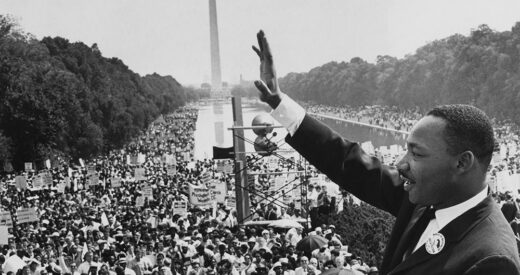The Zoom call had ended, but the sensation of extreme exposure still lingered. And, predictably, all the repressed feelings of shame, fear, and guilt flooded in. She said it with such a cavalier attitude; This might not be a culture fit. They’re very traditional, and you seem fun. You’re just fun, and they aren’t. That’s why this isn’t going to work.
It wasn’t two weeks ago that she was singing a completely different tune, praising the writing materials I had submitted for the prompt, insisting they were anxious to meet me. She said they’d been looking for a candidate for months and that I checked off all the boxes.
I was crushed, but not surprised.
For some, this exchange may seem like a minor difference of personalities when it comes to work culture between a recruiter and a job seeker. But growing up in the South taught me to pick up on the nuance of intonation before I even fully realized it, and I knew before she finished talking that things were amiss. I also knew that repeatedly using “fun” as a descriptor for a man in his late 20’s with no kids had a different meaning altogether.
What she was actually saying was that as a gay man, even if I somehow magicked my way into getting a job and a seat at the table, job security would not be served at mine.
…
I wish this horror show was an isolated incident, but versions like this have happened dozens of times in my five-year career and to conceivably hundreds of thousands of LGBTQIA+ brothers and sisters of mine since the dawn of time (or, well, organized society).
As a whole, we are an exposed and wearied lot, vulnerable to discrimination, with some much more exposed than others, waiting for the approval of the Employment Non-Discrimination Act (ENDA) to give us the protection so many others have but don’t realize.
This particular piece of legislation would be a gamechanger for queer people because it would prohibit discrimination in hiring and employment on the basis of sexual orientation by employers with at least 15 employees. The ENDA has been introduced every year to Congress except one since 1994 and similar versions of it since 1974, which means that we haven’t progressed that much if we’re still hung up on something that’s been in contention since the days of segregation.
And while I’ve been fortunate in that I’ve worked in some very LGBTQIA+ friendly environments, even the positive experiences involved some level of compromise.
Sometimes I had to out myself during an interview; other times, I was on the receiving end of a question that had an expected answer.
My greatest source of frustration, however, is almost always pointed in the direction of those who insist there is a clear line between employer and employee, that it is my responsibility to separate my work life and personal life, and that a workplace can and should function without having conversations around visibility because everyone should be able to work without making it known.
The problem with this thinking is that it doesn’t consider the environment as it truly is — everything we know was shaped through a heterosexual lens. The world as we understand it revolves around being straight. Everything you can think of — gender roles, marriage, jobs, hobbies, even algorithms on the internet, was based on straightness. It’s the perceived norm. So my earnest desire to have queer representation is about achieving the parity that the heterosexual community doesn’t even realize they have. It’s also the reason that I feel so strongly about furthering the cause of D&I and why I’m so committed to broadcasting The Diversity Movement’s message to those who need to hear it most.
And that starts with holding space for the right kind of generative conversations to happen. Because the conversations I’ve had in this space have made me realize that many companies are simply not getting the best talent because their filters are focused on “fit” and not excellence. The “culture fit” that companies use as an excuse to remain homogeneous is not only alienating members of the LGBTQIA+ community; it’s also limiting the amount of success their company will experience.
On the flip side, companies who have figured how to be intentional about multi-dimensional hiring and inclusion won’t run into this issue.
Sexual identity is a polarizing topic: it tears biological families apart and yet melds chosen families together. It means an assault on the physical body and livelihood of some (queer teens are twice as likely to be attacked, and most states don’t have protections in place for people being fired or evicted because of their sexuality) and a life of relative ease for others. For me, my life and my partner’s life aren’t held together by the same freedoms that heterosexual people enjoy.
If you’re reading this and still not sure why you should care about the plight of the queer community, consider the idea of a world where more than 1.5 million people live in fear of persecution. It’s the world you live in now. And it won’t change unless you do.
Let’s face it: You’re going to mess up. You’re going to use the wrong pronouns and outdated language, and you’re going to experience some friction because there will always be new things to learn. But keep moving forward. Inquire, research, and do your best because closed-mindedness is something that has never aged well.
This guest blog was contributed by Kyle Alexander, senior content marketer and UX writer, and part of The Diversity Movement community.






